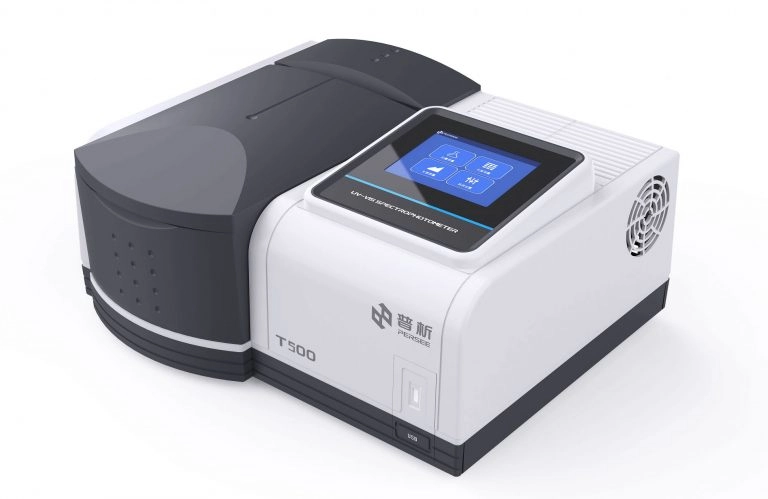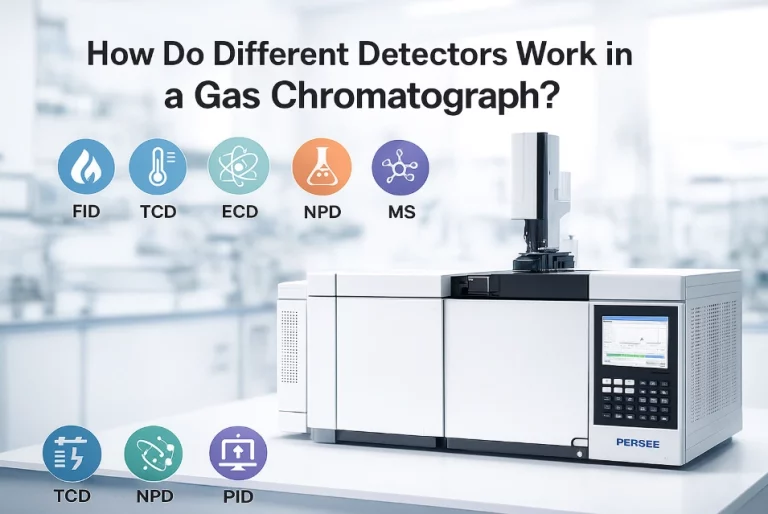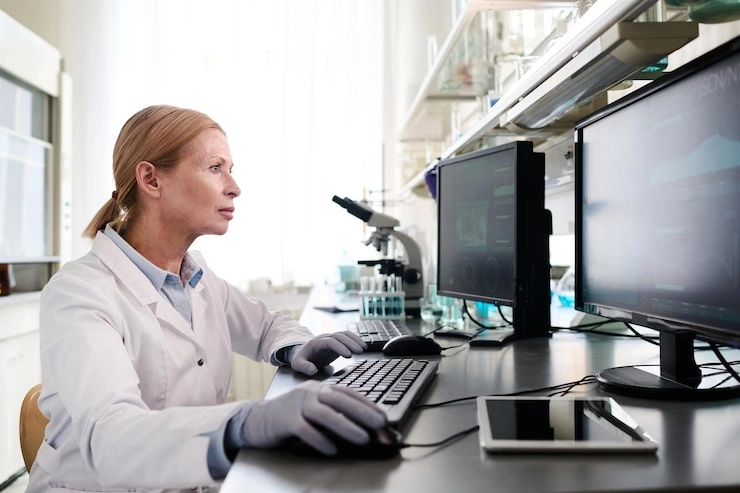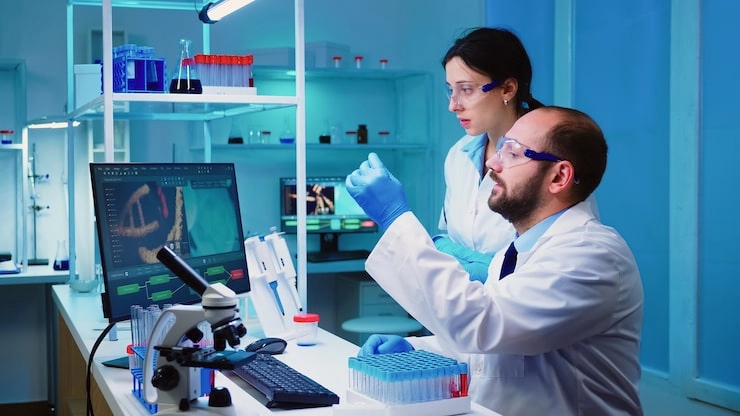
Fluorescence spectroscopy is a strong analytical tool. It’s common in science labs, factories, and hospitals. This method looks at light given off by a material after it soaks up energy. It offers clear details about that stuff. But “fluorescence” covers a lot of ground. The tech works at two very different sizes: the tiny molecular scale and the even smaller atomic scale.
This guide breaks down the main idea first. Then it dives into three big ways to use it. There’s Molecular Fluorescence Spectroscopy, the usual pick for checking complex molecules. Next comes X-ray Fluorescence (XRF) Spectroscopy, a tough tool for spotting elements. And finally, Atomic Fluorescence Spectroscopy (AFS), a super-sensitive way to find certain harmful elements. Knowing how each one runs is key to picking the best one for the job.
Principles of Fluorescence
The heart of fluorescence is simple. A material takes in energy and spits out light. An electron jumps to a higher spot. Then it drops back down. In the process, it shoots out a photon. That’s the glow. What sets these methods apart? It’s what gets excited—an entire molecule or just a single atom. Plus, the type of energy used to kick things off.
1. Molecular Fluorescence Spectroscopy (using a Spectrofluorometer)
This is the go-to technique when folks talk about “fluorescence spectroscopy.” It’s a big deal in biology, materials work, and health studies.
How It Works at the Molecular Level
Picture this. The method grabs low-energy UV or visible light—usually between 200 and 800 nanometers. That hits the outer electrons in a molecule. The molecule chills out and drops back to normal. It releases a photon with a longer wave. That’s the Stokes shift in action. The glow pattern? It’s like a personal tag for the molecule and its surroundings. The gear here is a spectrofluorometer. It packs a xenon lamp for light, filters to sort wavelengths, and a sharp detector like a photomultiplier tube (PMT).
What It Detects
- Organic and Biological Molecules: It nails stuff that lights up, like dyes from plants, drugs, and key signs in the body such as Green Fluorescent Protein (GFP).
It spots these things fast. Sensitivity? Down to nanomolar levels, or 10⁻⁹ M. That’s tiny.
- Molecular Interactions: This tool feels changes in a molecule’s world. Glow strength shifts with liquid type, acid level, or air bubbles. So it’s perfect for watching proteins twist up, enzymes speed reactions, or bonds form between partners. What’s more, it handles steady checks for amounts or time-based ones for quick dances—nanoseconds to picoseconds.
First off, steady-state fluorescence just grabs the average glow to count molecules. Time-resolved? It tracks how the light fades. That reveals hidden moves in the stuff.
2. Atomic-Level Fluorescence: Two Distinct Techniques
Shift gears now. When you’re after single atoms—not bundled molecules—the approach flips. Two main paths stand out here.
2.1. X-ray Fluorescence (XRF) Spectroscopy
XRF packs a punch. It’s non-damaging and great for figuring out what’s in a sample at the element level.
How It Works at the Atomic Level
Forget soft light. This uses hard-hitting X-rays, from 1 to 100 keV. The beam blasts an electron loose from an atom’s core shell. Then? An outer electron slides in to fix it. Boom—a new X-ray pops out as “fluorescence.” That ray’s power? It’s a dead giveaway for the element.
What It Detects
- Elemental Composition: XRF scans quick for basics, from magnesium (Mg) or aluminum (Al) all the way to uranium (U). It catches ppm traces—parts per million. The big question it answers: “What’s the makeup of this stuff, element-wise?”
Besides that, it’s handy for solids or dusts. No prep needed.
- アプリケーション: Think metal shops checking 316 stainless steel batches. Or rock hounds mapping earth layers. Even watchdogs sniffing lead in old paint. Thus, it fits quality checks, earth science, and green watch efforts.
2.2. Atomic Fluorescence Spectroscopy (AFS)
AFS goes deep. It’s picky and super sharp for just a handful of elements.
How It Works at the Atomic Level
Step one: Break the sample apart. No more molecule ties—just free atoms in a gas cloud. That’s atomization. Next, a targeted light—like from a hollow cathode lamp—fires the exact wave to wake only the wanted atoms. They light up in response. A detector grabs that pure signal. The setup? An Atomic Fluorescence Spectrometer.
What It Detects
- Specific Trace Toxic Elements: AFS isn’t for everything. It shines at ultra-low hunts for poisons like Arsenic (As), Mercury (Hg), Selenium (Se), and Cadmium (Cd). Limits? ppb or even ppt, based on the target and mix.
So, it’s overkill for most. But that’s the point—meets tough rules.
- アプリケーション: Food checks top the list. Think scanning fish for mercury under FDA’s 1.0 ppm cap. Environmental tests too. It beats other tools on sharpness, so compliance comes easy.
Summary and Comparison
| 特徴 | Molecular Fluorescence | X-ray Fluorescence (XRF) | Atomic Fluorescence (AFS) |
|---|---|---|---|
| Primary Target | Molecules | Atoms (Broad Range) | Atoms (Specific Few) |
| Excitation Source | UV-Visible Light | X-rays | Specific Wavelength Light |
| Sample State | Typically liquid solution | Solid, powder, or liquid | Sample is atomized into gas |
| Information | Molecular structure, concentration | Elemental composition | Ultra-trace element concentration |
| Key Use Case | Biological research, pharma | Quality control, geology | Food safety, environmental testing |
Quick note: Each row highlights the split. Molecular side stays wet and wiggly. Atomic ones? Dry facts or gas clouds.
Instrumentation from a Trusted Manufacturer: PERSEE
Picking the right gear matters a ton. Match it to the scale—molecules or atoms. A solid maker like 忍耐 covers all bases.
For those razor-sharp hunts of toxic atoms, PERSEE builds Atomic Fluorescence Spectrometers. They’re tuned tight for food and eco rules. No shortcuts.
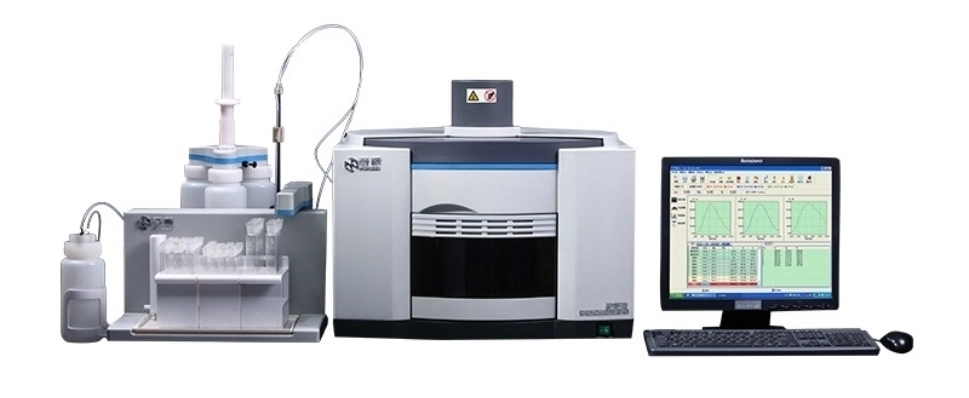
結論
All three lean on fluorescence glow. Yet their jobs? Night and day. Pick based on your puzzle. Want to unpack tangled molecules and their chats? Grab Molecular Fluorescence. Need the raw element lineup in a chunk? XRF rules. For pinpoint toxic atom traces? AFS wins hands down.
FAQs:
Q1: What is the difference between fluorescence and phosphorescence?
A: Both kick off from energy hits and light back. But phosphorescence drags it out. Slower electron paths mean glows that linger—seconds or minutes, like glow sticks. Fluorescence? It’s quick. Nanoseconds only.
Q2: Can fluorescence spectroscopy detect metals?
A: Sure. But it hinges on the style. XRF spots metal atoms straight up. AFS nails certain ones like mercury and cadmium at whisper levels. Molecular Fluorescence skips direct hits. Instead, it uses clever probes—molecules that only shine when grabbing that metal.
Q3: Why is a sample turned into a gas for AFS but not for XRF?
A: AFS demands free atoms in gas form. That way, the lamp’s light hits just the target without molecule clutter. XRF? Those X-rays punch through solids or liquids easy. They rattle inner electrons no matter the setup. So, no gas needed.

